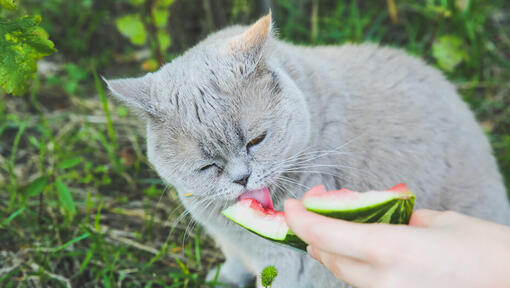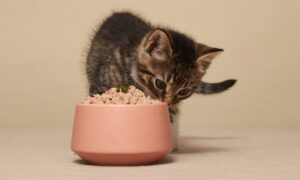Safe Fruits for Cats: A Guide to Feline Nutrition
Introduction
Cats are beloved companions and ensuring their health and well-being is essential. One aspect of their care is providing a balanced diet that includes the right nutrients. While cats are obligate carnivores, meaning they require meat to meet their nutritional needs, incorporating safe fruits into their diet can provide additional benefits. In this article, we will explore the world of safe fruits for cats, their nutritional benefits, and how to introduce them into your feline friend’s diet.
Understanding Feline Nutrition
Before diving into the safe fruits for cats, it’s important to understand the unique nutritional requirements of felines. Cats are obligate carnivores, which means they require high levels of protein and specific nutrients like taurine. Meat-based diets are essential for their overall health and well-being. However, adding safe fruits in moderation can offer supplemental vitamins, minerals, and fiber that contribute to their overall nutrition.
Identifying Safe Fruits for Cats
When it comes to offering fruits to your feline companion, it’s crucial to be aware of the safe options. Some safe fruits for cats include:
- Blueberries: Blueberries are a great source of antioxidants and vitamins C and K. They make a tasty treat for cats.
- Bananas: Cats can enjoy small amounts of ripe bananas as they provide potassium and fiber. Remember to remove the peel before offering it to your cat.
- Watermelon: This hydrating fruit is safe for cats in small quantities. Remove the seeds and rind, and offer small, bite-sized pieces.
- Cantaloupe: Rich in vitamins A and C, cantaloupe can be a refreshing treat for cats. Remove the seeds and skin, and cut it into small, cat-friendly portions.
Nutritional Benefits of Safe Fruits
Safe fruits for cats offer various nutritional benefits. While they should not replace a balanced, meat-based diet, incorporating them can provide additional vitamins, minerals, and fiber. Some benefits of safe fruits for cats include:
- Vitamins and Antioxidants: Fruits like blueberries and watermelon are rich in vitamins and antioxidants, which support a healthy immune system.
- Hydration: Fruits with high water content, such as watermelon and cantaloupe, can help keep cats hydrated, especially during warmer months.
- Fiber: Safe fruits provide fiber, which aids digestion and can help prevent constipation in cats.
Risks of Unsafe Fruits for Cats
While some fruits are safe for cats, it’s crucial to be aware of the risks associated with unsafe fruits. Certain fruits can be toxic to cats and should be avoided. Some examples of fruits toxic to cats include:
- Grapes and Raisins: Grapes and raisins can cause kidney failure in cats and should never be offered to them.
- Citrus Fruits: Citrus fruits like oranges and lemons contain essential oils that are toxic to cats and can cause digestive upset.
Introducing Safe Fruits into a Cat’s Diet
When introducing safe fruits into your cat’s diet, it’s essential to do so gradually and with moderation. Here are some steps to follow:
- Start with small portions: Begin by offering a tiny piece of the safe fruit as a treat. Monitor your cat’s response and observe if there are any adverse reactions.
- Observe your cat’s preferences: Cats have individual preferences when it comes to taste. Some may enjoy certain fruits more than others. Pay attention to which fruits your cat seems to enjoy and focus on those.
- Mix fruits with their regular diet: You can incorporate safe fruits into your cat’s regular meals by mixing small portions with their usual food. This can help them get accustomed to the taste and texture.
- Monitor for any digestive issues: Keep a close eye on your cat’s digestion when introducing new fruits. If you notice any signs of digestive upset, such as vomiting or diarrhea, discontinue offering that particular fruit.
Portion Control and Moderation
While safe fruits can offer nutritional benefits to cats, it’s crucial to practice portion control and moderation. Fruits should only constitute a small portion of their overall diet. Too much fruit consumption can lead to an imbalance in their nutritional intake or digestive issues. Always consult with your veterinarian to determine the appropriate amount of fruit to include in your cat’s diet.
Preparing Safe Fruits for Cats
Before offering fruits to your cat, it’s important to prepare them properly:
- Wash the fruit: Thoroughly wash the fruit to remove any pesticides, dirt, or debris that may be present on the skin.
- Remove seeds, pits, and rinds: Certain parts of fruits, such as seeds, pits, or rinds, can pose a choking hazard or be toxic to cats. Remove them before offering the fruit to your cat.
- Cut into cat-friendly pieces: Cut the fruit into small, bite-sized pieces that are easy for your cat to chew and swallow. This helps prevent choking and aids in digestion.
Monitoring Your Cat’s Response
As you introduce safe fruits into your cat’s diet, closely monitor their response. Look for any signs of allergies, digestive issues, or changes in behavior. If you notice any negative reactions, stop offering that particular fruit and consult your veterinarian. Each cat is unique, and their tolerance for different foods may vary.
Common Misconceptions about Cat Nutrition
There are several common misconceptions about cat nutrition and the inclusion of fruits in their diet. It’s important to address these misconceptions to ensure the well-being of your feline companion:
- Cats need a meat-based diet: While cats do require a meat-based diet to meet their nutritional needs, incorporating safe fruits in moderation can provide additional benefits. Fruits should never replace the main protein source in a cat’s diet.
- Cats should eat fruits exclusively: Fruits should only be a small part of a cat’s overall diet. They should not be the primary or exclusive food source.
Conclusion
Incorporating safe fruits into your cat’s diet can offer additional nutritional benefits, but it’s crucial to do so in moderation and with careful consideration. Remember to identify the safe fruits for cats, introduce them gradually, and monitor your cat’s response. Always consult with your veterinarian for guidance on your cat’s specific dietary needs.
FAQs (Frequently Asked Questions)
- Can cats eat all types of fruits? No, not all fruits are safe for cats. Some fruits can be toxic or pose other health risks, so it’s important to stick to the safe options mentioned in this article.
- How often can I give fruits to my cat? Fruits should only be given as an occasional treat and should not exceed 10% of their overall diet. Moderation is key to ensure a balanced nutrition plan for your cat.
- Are there any specific fruits to avoid completely? Yes, some fruits like grapes, raisins, and citrus fruits should be avoided as they can be toxic to cats. It’s better to err on the side of caution and stick to the safe fruits mentioned in this article.
- Can I feed my cat fruit as a meal replacement? No, fruits should never be used as a meal replacement for cats. They require a diet primarily based on high-quality animal protein to meet their nutritional needs.
- Can I feed my cat fruit baby food instead? While fruit baby food may seem like a convenient option, it’s important to check the ingredients and ensure there are no added sugars or harmful additives. It’s best to consult with your veterinarian before introducing any new food to your cat’s diet.
Read More:Cat’s Safe Diet Options: What Can a Cat Eat?




















